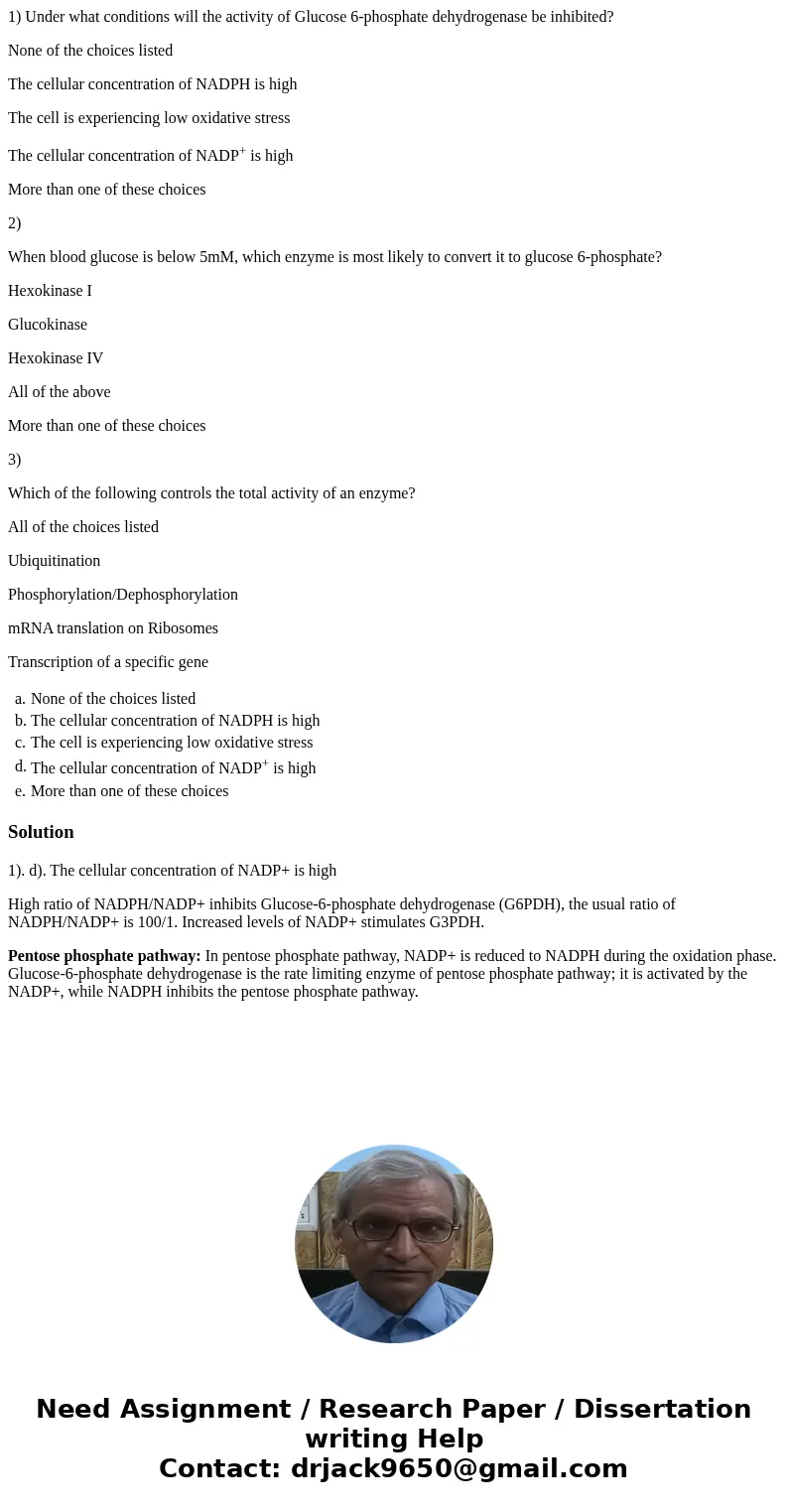1 Under what conditions will the activity of Glucose 6phosph
1) Under what conditions will the activity of Glucose 6-phosphate dehydrogenase be inhibited?
None of the choices listed
The cellular concentration of NADPH is high
The cell is experiencing low oxidative stress
The cellular concentration of NADP+ is high
More than one of these choices
2)
When blood glucose is below 5mM, which enzyme is most likely to convert it to glucose 6-phosphate?
Hexokinase I
Glucokinase
Hexokinase IV
All of the above
More than one of these choices
3)
Which of the following controls the total activity of an enzyme?
All of the choices listed
Ubiquitination
Phosphorylation/Dephosphorylation
mRNA translation on Ribosomes
Transcription of a specific gene
| a. | None of the choices listed | |
| b. | The cellular concentration of NADPH is high | |
| c. | The cell is experiencing low oxidative stress | |
| d. | The cellular concentration of NADP+ is high | |
| e. | More than one of these choices |
Solution
1). d). The cellular concentration of NADP+ is high
High ratio of NADPH/NADP+ inhibits Glucose-6-phosphate dehydrogenase (G6PDH), the usual ratio of NADPH/NADP+ is 100/1. Increased levels of NADP+ stimulates G3PDH.
Pentose phosphate pathway: In pentose phosphate pathway, NADP+ is reduced to NADPH during the oxidation phase. Glucose-6-phosphate dehydrogenase is the rate limiting enzyme of pentose phosphate pathway; it is activated by the NADP+, while NADPH inhibits the pentose phosphate pathway.

 Homework Sourse
Homework Sourse